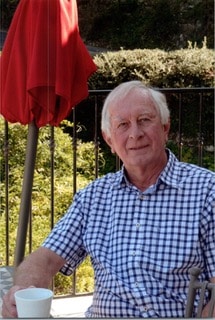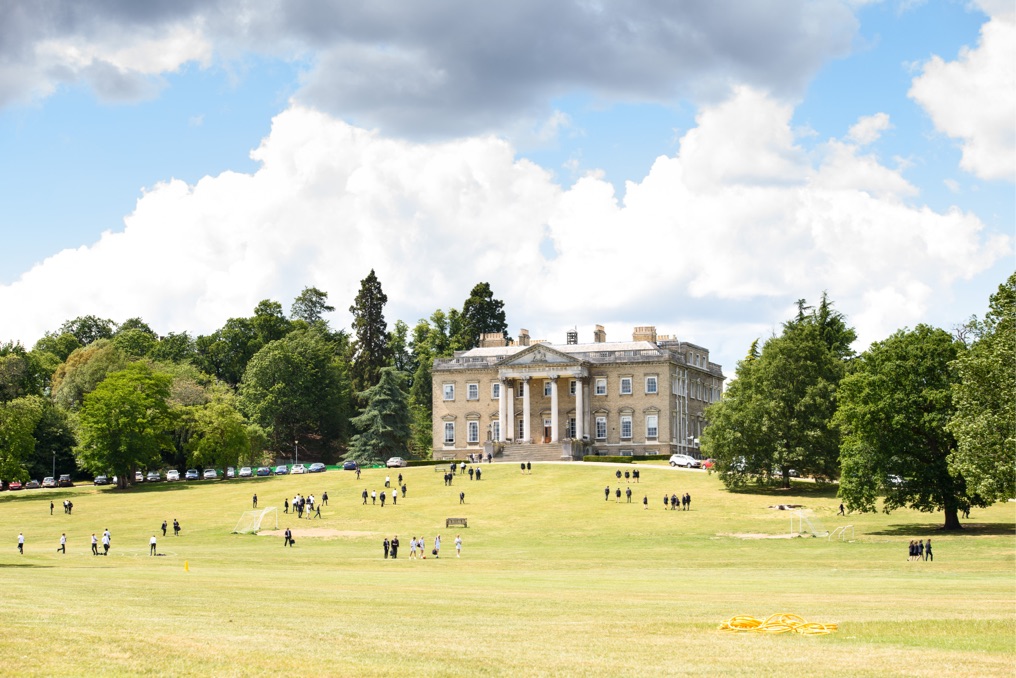FAN COURT SCHOOL
Cayley, Class of 1959
Giles Talbot
Giles remembers moving from Malawi to Fan Court School in 1956 and shares anecdotes on T.C Elliott, Mary Willcox and Guy Snape:

“I went to Fan Court in 1956 at the age of nine, after a couple of years at the sole primary school for expatriates in what was then Nyasaland (now Malawi). The school there was underfunded and had a distinct frontier feel. In fact, firearms in the playground were banned in my first term after a boy was shot in the leg with an air rifle during break-time. In contrast the teaching at Fan Court was a revelation, and I soaked up everything I was taught.
My brother Jeremy, who was then 16 and had left Fan Court three years previously, visited me with my parents. They met T.C Elliott, the headmaster at the time, and Jeremy remarked afterwards “When I met Mr Elliott again, I expected to find him diminished. But what stature!” His comment was used in a booklet put together to mark Mr Elliott’s retirement not long afterwards.
Mrs Willcox used to take nature study and English in the lower classes. One of the features in her English lessons was a weekly, 20-word spelling test. If the whole class got a word right, it was ‘moved’ or replaced by another one. In the class was a boy who today would probably have been diagnosed with dyslexia. He simply could not spell, and our list of 20 words changed at a glacial rate. One day Mrs Willcox challenged the class to ‘move’ all 20 words. It still astonishes me today, but we boys got together and coached our struggling friend, and the following week we cleared all 20 words.
Guy Snape, one of the founders of Fan Court, had had polio as a boy, and walked with a bad limp and a stick. One day, he reproved a boy for commiserating with a friend who had failed in some endeavour by saying “bad luck”‘ Mr Snape suggested that “well tried” would have been better and more positive. A few days later Mr Snape tripped and fell while walking up the broad steps to the classrooms. The same boy happened to be passing, and stopped to help Mr Snape to his feet. “Well tried, sir!” he said. Mr Snape often told that story against himself.
My personal memories of Fan Court come in great photographic flashes. The wooden cricket pavilion, with our nailed shoes clumping on the floorboards and the never to be forgotten scent of Blanco and linseed oil from pads and bats. Dividing up the butter pat at mealtimes, with the rest of the table closely scrutinising your accuracy. Silent reading time in the library after lunch and, in summer, on the terrace with the efforts of earnest students of violin and piano floating down from the practice rooms upstairs in varying degrees of proficiency. Digging holes in the rhododendron shrubbery on a Sunday afternoon (tunnels to be no longer than the headmaster’s arm) and, when a little older, being the bearer of the official box of matches to light fires for the junior boys to cook chestnuts. Playing cricket with a tennis ball against the gym wall during break. Playing away games at other prep schools which, like Fan Court, were evidence of great social change over previous decades as country houses were sold and estates broken up. The Sunday evening ‘read’ in the elegant formal drawing room at the front of the house, with Mr Andreae reading ‘The Hobbit’ out loud to the more senior boys. A memorable lesson on the Vikings by Mr Snape, his superb drawing of a longship with shields in coloured chalks so good that other staff left it untouched on the blackboard for weeks. Playing board games in the library on wet afternoons. Helping D Anable, an old boy spending a few weeks as an assistant master, to time his whippet over 100 yards on the sports field. (From memory, 6.2 seconds after an initial doggy moment of bewilderment.) Reading, from the handwritten Fan Court magazine, pieces contributed by senior boys when they were much younger – and sneaking a look at your own. Very cold and wet games of rugby and football. The twice-weekly tuck ration, to be absorbed slowly during silent reading. Playing conkers, and having one’s champion destroyed by a monster rumoured to have been boiled: unfair! French cricket on a summer evening on the wide green terraces, brought to a close by the bedtime bell. Being taken to Heathrow at the end of the summer term by two of the younger matrons, who treated it as an adventure, to catch the flight to Nyasaland. Embarrassingly, ringing the bell for the end of class – ten minutes early. Filling up inkwells from a huge bottle with a metal spout. Chalk dust. Digging potatoes on the estate. Spelling tests, general knowledge tests, sitting the 11+ at the village school in Lyne Lane. Mr Willcox’s scooter. Mr Snape’s Isetta bubble car. A half-holiday for the school to see the Oxford and Cambridge rugby match at Twickenham. Our clean laundry placed on The Slab upstairs. The bedtime sandwich and mug of milk on the oilcloth of the big table in the matrons’ room. A spell in the South Wing (sick bay), reading copies of The Young Elizabethan, an excellent and long-gone newspaper-cum-magazine for children. Wearing long trousers for the first time. Earning sixpence from Mr Snape for reciting from memory the kings and queens of England and their dates. Visiting the school on sports day from (the then) Rhodesia as an old boy with my new wife, not long before the merger with Claremont.
And my fellow pupils – R Seabourne; P McNab; R McMicking; K Dabbagh; S Lundqvist for just one term from Sweden; Kitcat I, Kitcat II and Kitcat III; A Taylor; J Godfrey, who had only the one, highly effective, cricketing stroke; I Ellvers; D Silver; Q Peel; J Mais; Williams I, Williams II and Williams III; J Copley of the Copley Mathematical Method, which meant reaching the right result in the most roundabout way possible; F Bond; Brooksbank I and Brooksbank II (later to be the father-in-law of Princess Eugenie); M Sale; P Ekins, usually known as Snike for the obvious reason; R Chase; R ‘Puggy’ Greenwood; D Matthews; D Furlong; D ‘Plum’ Simpson; D Waghorn … I shall probably wake in the night with more names surfacing from the subconscious.”


